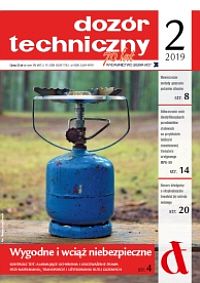
- Reconstruction of steel identification features on the example of the nameplate of tank trainer items
The article describes the results of experimental investigations on the validation of chemical reagents for the digestion of steel in order to recreate faded identification features. Chemical research was carried out with the participation of the author during the performance of one of the diploma theses under his supervision. Reproduction of identification features in the event of their destruction by, for example, corrosion or intentional seizing makes it possible to determine the serial number, type and purpose of the object, which is of particular importance in archeology. It is also one of the key issues dealt with by mechanoscopy - the field of forensic science, whose role is to study traces on hard surfaces. In mechanoscopy, the number fields of vehicles are most often examined for features. Introduction The inspiration to write the article was the need to reconstruct the identification features of the frame reproduced at the Lublin Polytechnic by the Polish tanker MPG-69, the design of the colonel MSc. Zbigniew Węglarz. In the years 1969-1975 in Piła and then in Braniewo a series of at least 180 pieces of these vehicles was made. Back in the 1980s, they were used for initial training in T-54/55 tanks and other tracked vehicles in the LWP. The trainer recreated in 2017-2018 at the Lublin Polytechnic is most likely the only existing one in the world. The author of the article was the main contractor of this undertaking.
- Innovations, technologies, science - educational zone at EXPOPOWER
EXPOPOWER is one of the most important trade fair events of the energy industry with several years of tradition. It gathers every year many exhibitors from the industry, both from Poland and abroad. During this year's EXPOPOWER, apart from specialist exhibitions and lectures devoted to smart solutions for cities, widely understood electro-mobility, an educational zone prepared by Enea Opera will be launched. What awaits students visiting the zone? Young people will be able to see energy at work during specially arranged shows. In addition, visitors will have to wait for scientific experiments, energy curiosities and rescue demonstrations.
- Disturbing results of the LPG cylinder control. They are comfortable, inexpensive and ... dangerous
Millions of homes, apartments and businesses use gas cylinders for LPG. Gas cylinders are commonly used in households, in trade and in industrial plants. They have many different applications - from gas supply to cookers, grills, heating devices (gas radiators, heaters or heaters in catering gardens, small shops and service outlets), through supplying forklift trucks, to use in industrial and installation processes in which the burners fed with liquid gas are used, for example, in roofing works or in metalworking and cutting. The most commonly used 11 kg LPG cylinders (propane-butane or propane mixture with flange and without collar) Their popularity results from the extensive distribution network and affordable price, and they are used mainly where there is no natural gas network, in smaller towns, but also in peripheral districts of large cities, where there is a dispersed single-family construction, the price of an 11-kg propane-butane cylinder, depending on the region of the country, ranges from 40 to 60 zlotys. connected to a functional stove, it burns with an even flame, does not mess with pots and lasts up to 6 weeks for a family of four.
- Modern methods of extinguishing silos fires
The publication presents the mechanism of formation of fires in silos and the procedure of extinguishing them. The conventional extinguishing media (inert gas, water, foam) and the innovative method of extinguishing the CutLance fire-fighting lance were compared. Other possibilities of using the lance while extinguishing fires in hard-to-reach places were also presented
- Lifs of hoist and operational durability of its load-bearing structure
The concept of crane lifetime should undoubtedly be associated with the notion of the operational durability of its load-bearing structure, experiencing in the real conditions of use primarily fatigue effort. This stresses occur in selected locations of the main parts of the load-bearing structure subjected to the durability of the design process to ensure the aforementioned durability in the design lifetime of the hoist. While hoist mechanisms and drives can be exchanged for many reasons in this period, its load-bearing structure, which is in fact a constitutive and not exchangeable part of the hoist, is primarily maintained and repaired or modernized, taking into account the relevant standards. Thus, it is obvious that the lifetime of the crane's load carrying system is decisive for its total lifetime and rational behavior in the event of hoist service life.
Dozór Techniczny (Technical Supervision) - full list







